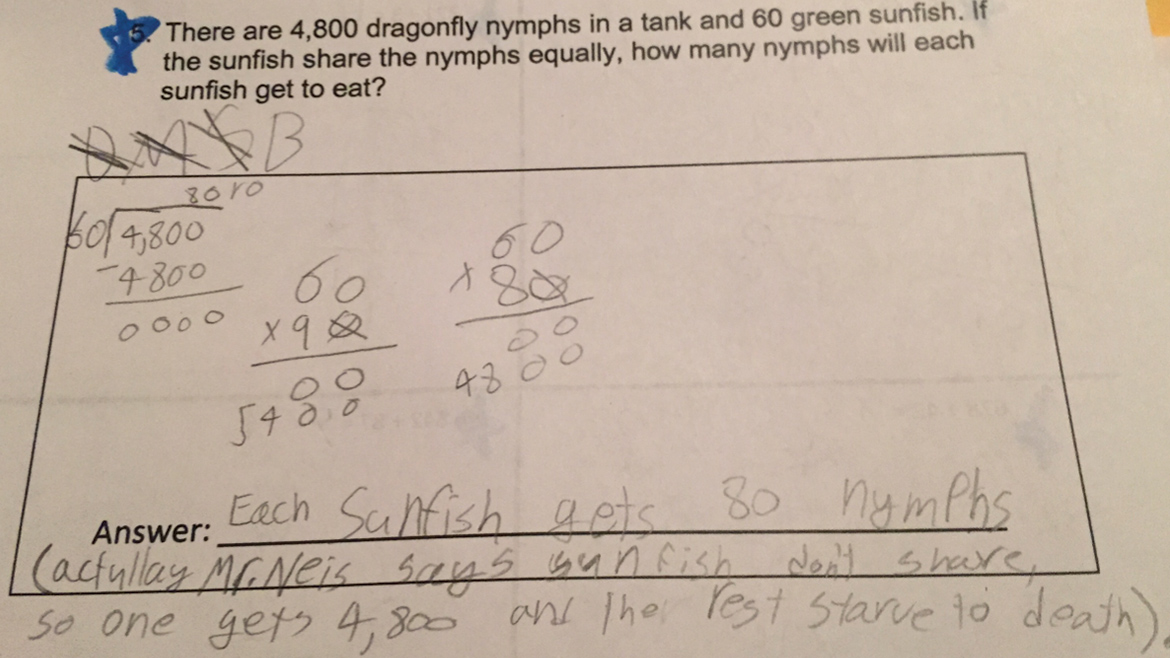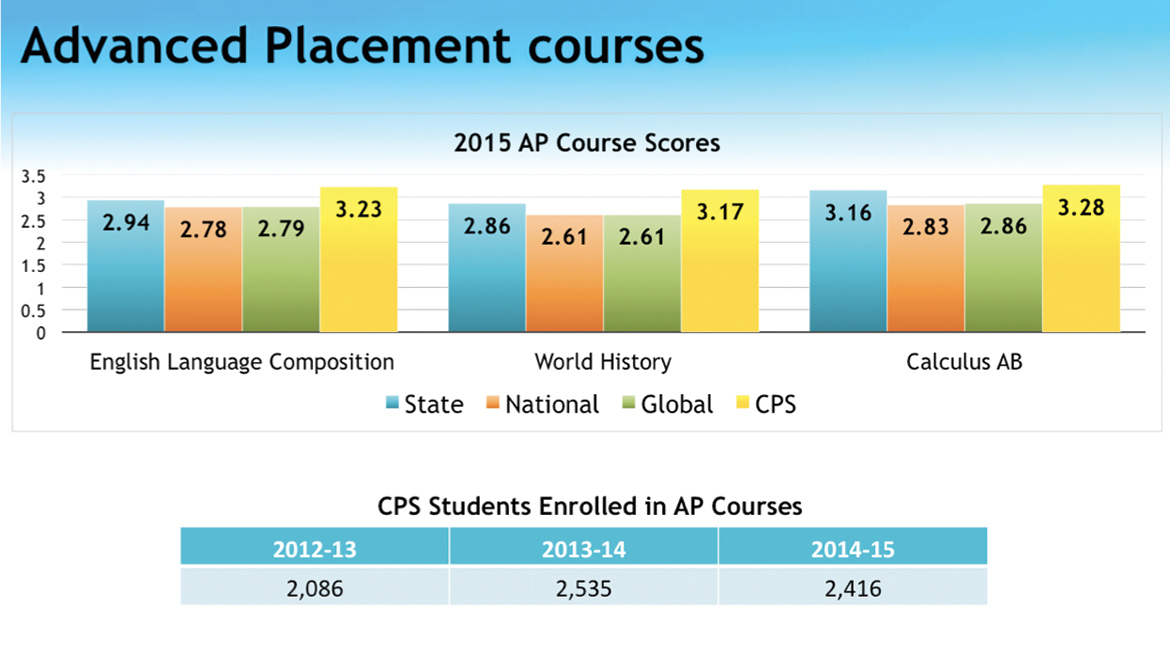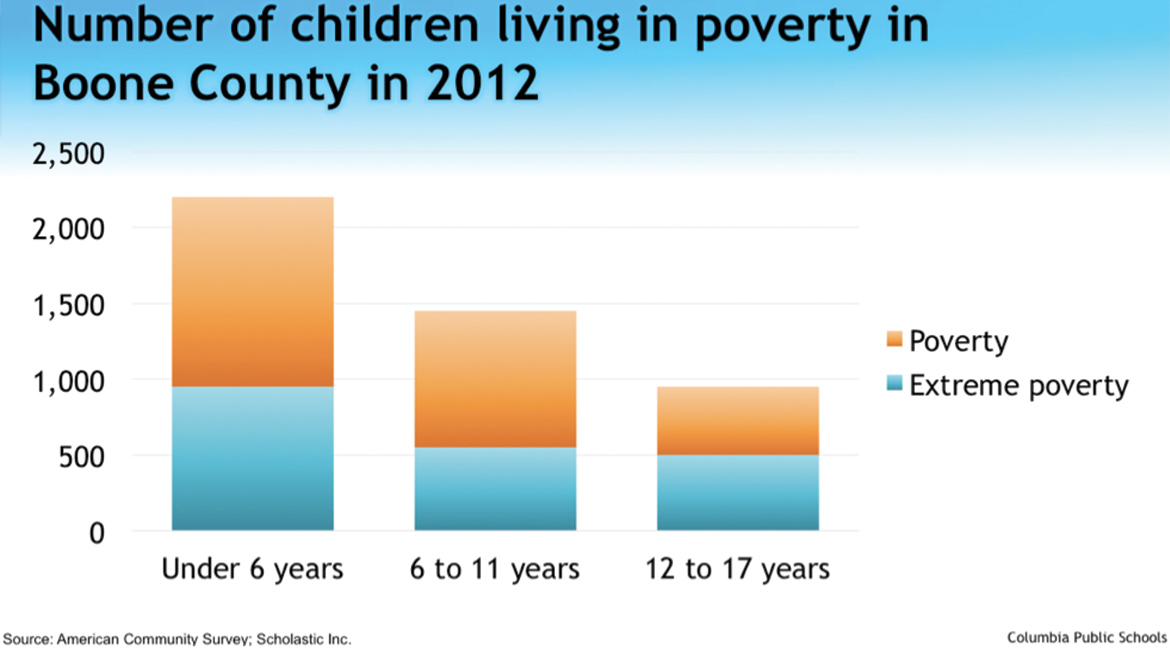Peter Stiepleman: Do the Math for Student Success
 Last week, my fifth-grader son brought home a math assignment. My middle son and mathematics have a complicated relationship. He would say that it’s not at all complicated, but rather straightforward. He doesn’t like math. I’ve told him that math, like any other subject, requires attention. Math requires patience. Math can be demanding and overwhelming sometimes, but math can be fun. “So have fun with it,” I told him. And that’s exactly what he did!
Last week, my fifth-grader son brought home a math assignment. My middle son and mathematics have a complicated relationship. He would say that it’s not at all complicated, but rather straightforward. He doesn’t like math. I’ve told him that math, like any other subject, requires attention. Math requires patience. Math can be demanding and overwhelming sometimes, but math can be fun. “So have fun with it,” I told him. And that’s exactly what he did!
On a recent math test, one question read, “There are 4,800 dragonfly nymphs in a tank and 60 green sunfish. If the sunfish share the nymphs equally, how many nymphs will each sunfish get?” After doing the math, he answered, “Each sunfish gets 80 nymphs (actually Mr. Nies says sunfish don’t share, so one gets 4,800 and the rest starve to death).”
If you’re dividing the 4,800 dragonfly nymphs equally, each sunfish does get 80. But if you take into account a sunfish’s predisposition towards selfishness, it wouldn’t seem unreasonable that some would perish due to a lack of resources. I’ve been sharing my son’s math story throughout the community — not as a parable for how we, as a community, need to share, but because it is so darn funny!
During the last month, I’ve also been telling another story — the story of our school district. I’ve addressed a well-attended CPS World Café about how we catch up with growth, as well as plan for the future. I’ve spoken about homeless students to the Columbia Pachyderm Club and about the rise of refugee students to the Columbia Kiwanis Club. I’ve spoken to Rotarians about our proposal for a new middle school, to relieve the overcrowding at Gentry Middle School. I’ve spoken to associations and the local media about the lack of state funding for public education. I’ve traveled to Lincoln University and Central Methodist University, and I’ve presented our data to educational leadership and policy analysis graduate students at the University of Missouri. After each presentation, someone invariably walks up to me and says, “My, you’ve got a big job.”
The truth is, we all have a big job. Our schools are an important piece of our community. The success of our public school system is inextricably tied to Columbia’s economic future. The work that we do, the challenges we face and the opportunities we pursue must be done together. It’s why I start and end every presentation with three words: We are one.
In my last column, I mentioned that as our community has grown, our enrollment has grown from 16,400 students in 2001 to 18,000 in 2015. That growth requires the school district to think carefully about how it achieves its eight organizational goals while honoring feedback from parents and guardians. Half of our 8,000 parents and guardians responded to a district-wide survey saying that the most important thing was that their children have highly qualified teachers who create a nurturing environment. Every one of our 2,700 employees is devoted to providing an excellent education for all our students. When students graduate from our school district, they are college and career ready (organizational goal 5). Our students outperform state, national and international peers when it comes to Advanced Placement (AP) testing.

On every AP exam we administered, our students excelled. And we accomplished this while also increasing the number of students enrolled in these higher-level courses. Originally championed by former superintendent Chris Belcher and the principals and counselors from Battle, Hickman and Rock Bridge, we identified and encouraged students from underrepresented groups (like first-generation college students) to enroll in AP courses. This is important because students who take demanding coursework in high school are more likely to graduate from college. We’re so proud of our results. We’re so proud of our students. And we’re so proud of the teachers who have made these successes possible.
As the third largest employer in Columbia, recruiting and retaining the very best employees is the only way we’ll be able to continue to deliver an excellent education for all students. Teachers are the one of the most important factors in our children’s achievement, and their jobs have only become more difficult.
In the last issue, I referenced how we are serving a greater percentage of children from economically stressed homes. Our free and reduced lunch numbers have grown dramatically over the last 15 years, from 4,176 eligible students in 2000 to 6,932 eligible students in 2015. Since high school students don’t typically turn in the free lunch application, we believe that nearly 50 percent of our students would qualify for the federal program — nearly one in every two. Additionally, we keep track of the number of students living in poverty and extreme poverty. Extreme poverty is defined as the average daily consumption of $2 per day. For a family of four, that’s $8 a day or $2,920 a year. The number of children coming from poor or extremely poor families in Boone County is growing.

Just like the math lecture I gave my middle son, we need to approach our revenue shortfalls and our rising levels of poverty with a similar approach. We need to be attentive. We need to be patient; we’ve got good systems in place. We need to accept that the work is demanding and, at times, nearly overwhelming. To suggest that it’s fun belittles the entire endeavor. I know this, though: there is no community I’d rather be a part of than the one we have in Columbia. We are one.


